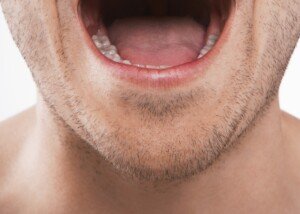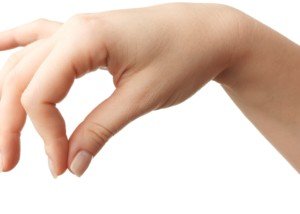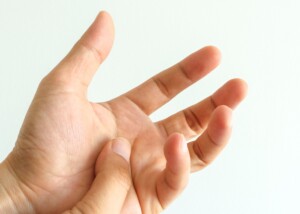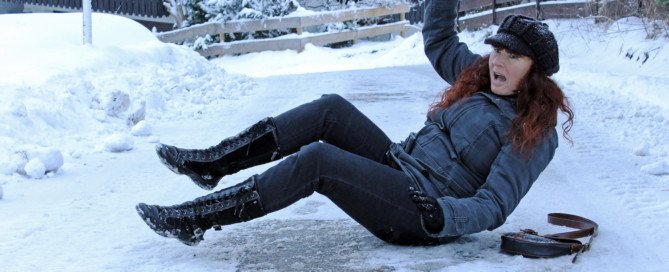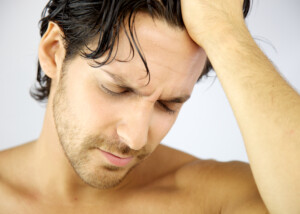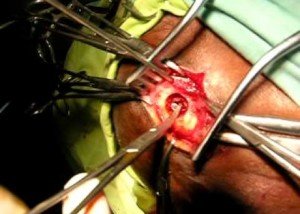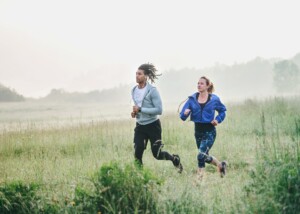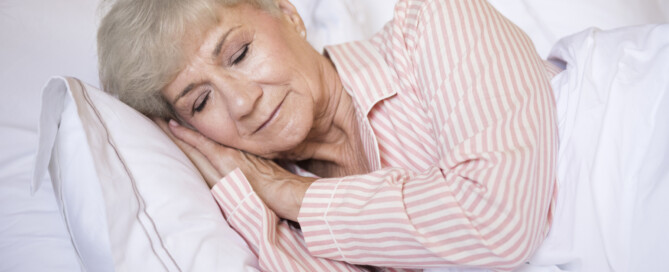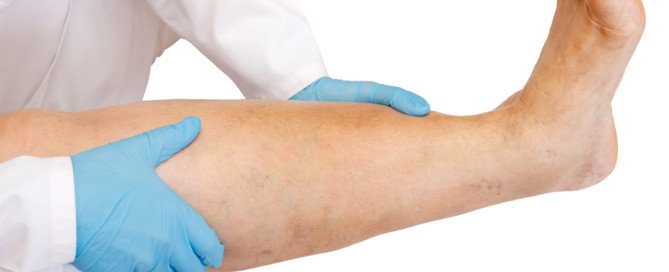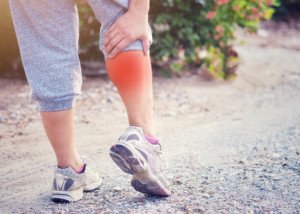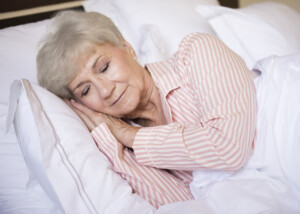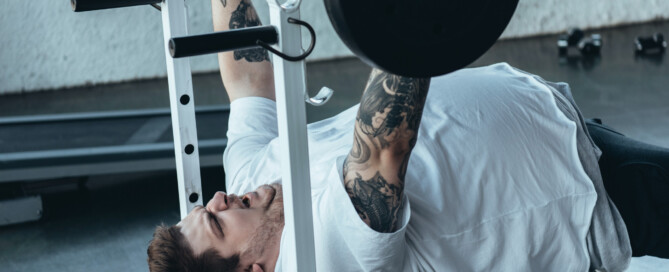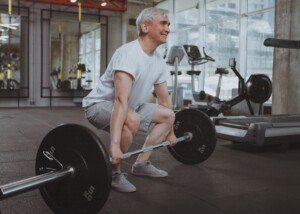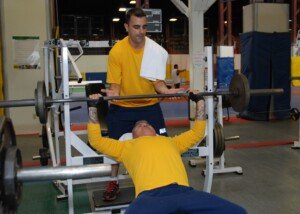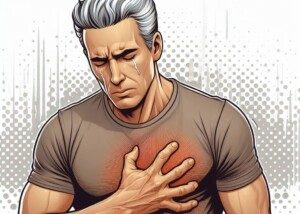What Cancers Cause Blood in the Saliva?

There’s a difference between blood in the saliva and coughing up blood.
There are 3 cancers that can cause blood to be in your saliva. You need not cough to see it.
Blood in the saliva means that if you spit (no coughing, just a voluntary spitting), you may see red.
It also means that you will invariably taste the blood.
There are a number of cancers that cause blood to appear in phlegm that is coughed up, such as lung and esophageal cancer.
Some of this blood, from a mechanical standpoint, may end up retained in your mouth—not all of it will be coughed out. So technically, you’ll have “blood in the saliva.”
But in the absence of coughing it out, here are the three cancers that may cause blood to be in your saliva:
• Mouth/Oral (includes cheeks and gums)
• Pharynx/Throat (includes tonsils, adenoids and uvula)
• Leukemia
“Blood in the mouth/saliva can be from many different sources and most probably, none of them are from cancers,” points out Daniel Vorobiof, MD, former medical oncology director of The Sandton Oncology Centre in Johannesburg, South Africa.
“However, any cancer that occurs in the mouth and is not attended to might ulcerate and stain the saliva bloody,” says Dr. Vorobiof, who also runs the “Ask the Oncologist” forum in Belong.Life, the world’s largest social network for cancer patients.
So in short, if one day you begin tasting blood in your mouth, especially if you’re a nonsmoker and nondrinker, chances are far more likely that it is not from cancer.
Risk Factors for Mouth/Oral Cancer
• Age; average age of diagnosis is 62.
• Lack of fruits and vegetables
• Genetic mutations
• Smoking cigarettes and chewing tobacco (80 percent of patients)
• Drinking (70 percent of patients are heavy drinkers)
• HPV infection (25 percent of patients)
• Immunosuppressant prescription drugs
• Unproven risk factors: mouthwash and irritation from dentures
Risk Factors for Pharynx/Throat
• Lack of fruits and vegetables
• High salt/sodium diet
• Smoking cigarettes, pipes and cigars, and chewing tobacco
• Heavy drinking
• Asbestos exposure
• HPV infection
• GERD
Risk Factors for Leukemia
• Increasing age (except for “ALL” leukemia)
• Family history
• Smoking cigarettes
• Radiation exposure (such as from power lines, atomic bomb explosion)
• Chemical exposure (e.g., pesticides, benzene)
• Previous cancer treatment in the form of chemotherapy or radiation
Remember, blood in the saliva doesn’t always mean cancer.
It also has benign causes including gingivitis, ulcers in the mouth, cut in the gum or on the tongue, recent dental work, aggressive flossing or not having flossed for a while, and nosebleed.
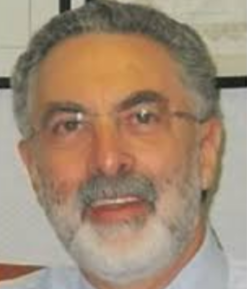 Dr. Vorobiof has authored more than 100 peer reviewed articles in international medical journals.
Dr. Vorobiof has authored more than 100 peer reviewed articles in international medical journals.
 Lorra Garrick has been covering medical, fitness and cybersecurity topics for many years, having written thousands of articles for print magazines and websites, including as a ghostwriter. She’s also a former ACE-certified personal trainer.
Lorra Garrick has been covering medical, fitness and cybersecurity topics for many years, having written thousands of articles for print magazines and websites, including as a ghostwriter. She’s also a former ACE-certified personal trainer.
.
Top image: Shutterstock/oneinchpunch
Sources:
homehealth-uk.com/mouththroatcancer/
cancer.org/cancer/acute-lymphocytic-leukemia/detection-diagnosis-staging/signs-symptoms.html
headandneckcancerguide.org/teens/cancer-basics/explore-cancer-types/throat-cancer/oropharyngeal-cancer/soft-palate-cancer/#Signs and symptoms of soft palate cancer
cancercenter.com/lung-cancer/symptoms/
cancercenter.com/oral-cancer/risk-factors/
cancercenter.com/throat-cancer/risk-factors/tab/pharyngeal-cancer-risk-factors/
cancercenter.com/leukemia/risk-factors/
md-health.com/Blood-In-Saliva.html
Twitching Index Finger from Computer Mouse Use: Solutions

If your index finger is twitching, jerking or “jumping” as a result of computer mouse use, there are causes and solutions to this annoying problem. (more…)
Slip & Fall, Hit Head Hard on Concrete: Brain Bleed Prevention

The more fit your brain is, the less likely you’ll get a brain bleed from slipping on ice and hitting your head hard on the concrete.
So the question then is, “How do we make our brain as fit as possible?”
I slipped and fell on a sheet of ice in my parents’ driveway. It happened so fast that I couldn’t react fast enough to prevent the back of my head from slamming into the concrete.
I immediately bounced back up, infuriated that this just happened, and quickly walked into the garage.
My head hit the concrete so hard that I considered the possibility of an acute subdural hematoma (brain bleed). The acute timeframe is up to three days from the incident.
Symptoms could kick in immediately or be delayed for six hours, 12, 24 or 72 hours.
Oddly enough — there was no pain. In fact, I began realizing my body and head felt as though I hadn’t even fallen, save for a little wetness on the left side of my hip and back from the ice and snow.
I was feeling quite normal, but knew that brain bleeds indeed could be delayed.
“In cases where a person seems perfectly fine after a head injury, we must keep in mind that there is a condition called lucid interval,” says Sashini Seeni, MD, a family medicine practitioner with DoctorOnCall, an online doctor and pharmacy.
“Lucid interval is the period of time when the patient seems fine after a head injury before becoming unconscious.”
My mother had blacked out due to low blood pressure several years prior in the bathroom and hit her head as she fell — on the bathtub.
It took six weeks for the brain bleed (chronic subdural hematoma) symptoms to begin presenting.
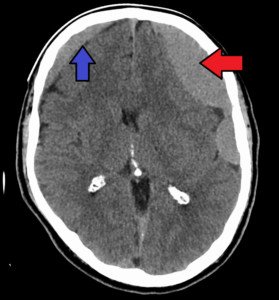
Subdural hematomas. James Heilman, MD
She was elderly. But chronic subdural hematomas (at least three weeks out from an accident) CAN occur in middle-aged people.
The subacute timeframe is between three days and three weeks out.
That very evening of my fall, the whiplash soreness – very sore — in my neck began setting in.
This really concerned me, because it suggested that my head must have really snapped back and hit the concrete hard.
However, I never developed any neurological problems (other than mild headaches on 10 separate days over a five week post-fall period).
I kept thinking of how this exact same fall would have killed an elderly person.
The primary care physician whom I saw six days post-fall told me that a brain bleed of the chronic subdural hematoma type in middle age people is exceedingly rare.
I know my head took the brunt of the fall. There had been only a few mild bruises on my left hip side.
My wrists and tailbone weren’t even affected. My butt didn’t have a single mark.
What Scared Younger Adults Who Hit Their Head Must Know
Shutterstock/Pixel-Shot
“In a patient with a head injury, the main concern is to detect intracranial hematoma, which is the collection of blood inside the skull caused by a ruptured blood vessel,” says Dr. Seeni.
“Over time, the amount of blood will increase and cause an increase in the intracranial pressure that leads to damage of the brain tissue.
“If a person does not show any immediate sign and symptoms after a head injury, look for any physical, emotional and mental changes.
“Intracranial hematoma can occur minutes or hours after a head injury.”
A chronic subdural hematoma (cSDH) is “predominantly a disease of the elderly,” says the Postgraduate Medical Journal (J 2002;78:71–75).
But if you’re middle aged or younger, and you’re worried sick that you’re going to have a brain bleed in the near future because you banged your head in the house somewhere, you need to know HOW a delayed brain bleed (cSDH) occurs in the elderly.
The Journal explains: “With aging, the mass of the brain decreases leading to an increase in the space between the brain and skull.
“This causes stretching of the bridging veins, and the greater movement of the brain within the cranium makes these veins vulnerable to trauma.”
To put this simply, when an old person gets banged in the head, there’s room for their aged, shrunken brain to shake around against the skull.
This jarring tears the veins between the brain and the skull.
The tears are very small (very slow bleeding), which is why, in a chronic SDH, symptoms take several weeks to start showing.
What about younger adults who DO die from brain bleeds?

Shutterstock/Corepics VOF
This kind of brain bleed beneath the dura mater is an “acute” subdural hematoma.
The Journal states: “Acute subdural haematomas generally occur in younger adults, after a major trauma, often associated with structural brain injury, and present within 72 hours.”
The key words here are “major trauma.”
If you, a middle age or younger adult, recently banged your head into the car door frame, or bonked your head on a table ledge after getting up from the floor … this doesn’t qualify as “major trauma.”
Other Examples of Non-Major Hits to the Head
• Accidentally walking into a closed glass door, thinking it was open (this happened to me; the glass was so clear that I proceeded to walk through and slammed my forehead).
• Banging head on anything above you when rising from the floor.
• In general, accidentally hitting your head in the course of everyday activities is non-major trauma—to the typical middle age or younger adult.
• Even falls to the ground are non-major trauma, especially if there are no rapidly developing neuro symptoms such as worsening headache, vomiting, slurred speech, confusion, sleepiness or seizures.
Examples of Major Head Trauma
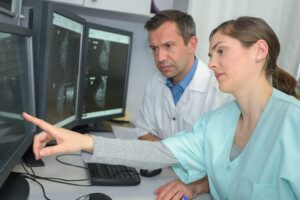
Doctors evaluating an image of an acute brain bleed. Credit: Alpha Prod
Major trauma to the head occurs in vehicular accidents, being thrown from a bike or horse, skateboard and ski accidents, falling from heights, getting hit by airborne objects, and hits from contact sports.
But knocking your head into the edge of an open cupboard door isn’t quite up there with these other more major examples.
Younger and even middle aged adults have bigger brains. There’s less room for the brain to be jostled around (and tear bridging veins) from non-major hits to the head.
A bigger brain means a tighter fit against the skull.
“If a person loses consciousness, they immediately need to be treated,” says Dr. Seeni.
She urges anyone who’s hit their head hard from a fall, yet feels perfectly fine, to ask someone close to keep an eye on them.
The issue now becomes: “How do I prevent brain shrinkage?”
The less shrunk your brain is, the less likely you will get a brain bleed from minor blows to the head.
In elderly people, the hit can be trivial enough to forget about by the time the symptoms appear weeks later.
To maintain the biggest and healthiest brain possible, you need a comprehensive fitness regimen.
Work out hard, and your brain will become the best it can be.
Activity that requires balancing has been shown in studies to improve brain health. Yoga and martial arts fall under this category.
 DoctorOnCall is the largest digital healthcare platform for citizens of Malaysia, allowing patients to consult doctors for advice, book appointments and place orders with local pharmacies.
DoctorOnCall is the largest digital healthcare platform for citizens of Malaysia, allowing patients to consult doctors for advice, book appointments and place orders with local pharmacies.
 Lorra Garrick has been covering medical, fitness and cybersecurity topics for many years, having written thousands of articles for print magazines and websites, including as a ghostwriter. She’s also a former ACE-certified personal trainer.
Lorra Garrick has been covering medical, fitness and cybersecurity topics for many years, having written thousands of articles for print magazines and websites, including as a ghostwriter. She’s also a former ACE-certified personal trainer.
.
Top image: Shutterstock/Astrid Gast
Source: pmj.bmj.com/content/postgradmedj/78/916/71.full.pdf
Does Your Heart Race when Rushing Across a Room? Cause & Solution

If the only time your heart races like mad is when you hurry across a room in the house, there’s a very likely reason for this and there’s a solution. (more…)
Can Sleep Apnea Be Diagnosed While You’re Awake?

Has your doctor said you can’t possibly have sleep apnea based on only your medical history and exam while you were awake? (more…)
Is Excessive Napping in the Elderly Healthy and Necessary ?

You don’t get a pass on the dangers of excessive sleep & napping just because you’re elderly.
Some older people will make excuses for all of their naps and will insist they “need it,” but being elderly does not make one immune to the hazards of excessive inertia. (more…)
Can Excess Sleep Cause a Deep Vein Thrombosis (Blood Clot) ?
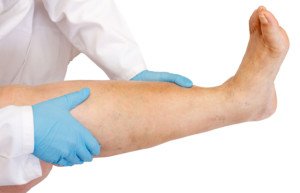
You know that excess sitting can cause a DVT, but what about sleep?
How much sleep is too much sleep when it comes to causing a blood clot in your vein?
“Excessive sleeping means you are in a reclined position for much of the time,” says Kathryn Boling, MD, a board certified family medicine practitioner with Mercy Medical Center in Baltimore, MD.
Dr. Boling continues, “Inactivity for any reason – a long plane flight, injury, hospitalization, or excessive sleeping could put a person at risk for a DVT.
“You’re on bed rest or sit for long periods of time. The deep veins in the center of your legs depend on muscles to force blood back to your lungs and heart.
“If muscles don’t move for a while, blood starts to pool in your lower legs. This makes it more likely for a clot to form.”
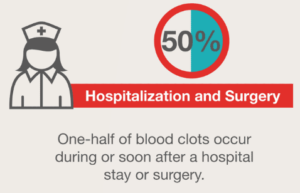
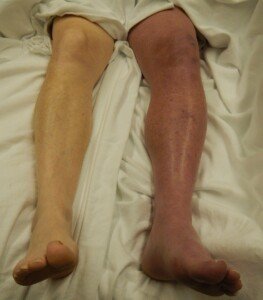
Deep vein thrombosis. James Heilman, MD, CreativeCommons
Just what is “excessive” sleep anyways?
- Sleeping over eight hours/day increases the risk of stroke (Leng et al, Neurology, 2015).
- Sleeping over 10 hours is linked to heart disease in people 45+ (CDC, Liu et al, SLEEP, 2013).
There are many more studies concluding that excess sleep is a gateway to an early grave, such as the one published in PLOS Medicine (Ding et al, 2015), reporting that the combination of sleeping nine+ hours and excessive daytime sitting is deadly.
The take-home message is to limit overnight sleep to eight hours (no more!) and to avoid the “sitting disease” during the daytime to help protect against DVT.
Other risk factors for a deep vein thrombosis include smoking, lack of structured exercise, obesity and use of birth control pills.
Symptoms of a DVT include calf pain and/or a swollen lower leg.
Less commonly, the swelling can occur in the thigh or pelvic area if the clot is higher up.
The area of suspicion may also feel unusually warm or tender to the touch.

Dr. Boling diagnoses and treats a wide range of conditions from acute illnesses to chronic diseases such as diabetes and hypertension, and has 20 years’ experience with Mercy Medical Center-Baltimore.
 Lorra Garrick has been covering medical, fitness and cybersecurity topics for many years, having written thousands of articles for print magazines and websites, including as a ghostwriter. She’s also a former ACE-certified personal trainer.
Lorra Garrick has been covering medical, fitness and cybersecurity topics for many years, having written thousands of articles for print magazines and websites, including as a ghostwriter. She’s also a former ACE-certified personal trainer.
.
Top image: Shutterstock/Ocskay Bence
Sources:
sciencedaily.com/releases/2015/02/150225164004.htm
sciencedaily.com/releases/2013/10/131001105059.htm
sscpywrt26
Does Being Fat Make Lifting Safer with Thoracic Aortic Aneurysm?
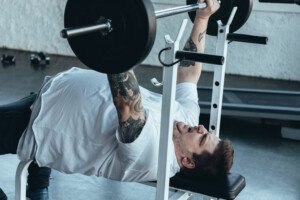
The rule of “Lift no more than your body weight” seems to favor overweight people with aortic aneurysm who aren’t necessarily stronger than slimmer people.
On typical medical sites, the guidelines for lifting weight for people with a thoracic aortic aneurysm go like this:
Lift no more than half your body weight.
Don’t lift more than 50 pounds.
Don’t lift anything heavy enough to make you strain.
That’s basically it. These are very ambiguous guidelines, open to subjective interpretation.
Half One’s Body Weight — WHAT ?
If you take this guideline literally, it means that obese patients with a thoracic aortic aneurysm get a free pass for heavy weight training.
Let’s take a 160 pound man with a thoracic aortic aneurysm who stands 5-9.
The rule allows an 80 pound lift (half his body weight). This means it’s safe for him to, for instance, deadlift 80 lbs.

Freepik.com
He then develops compulsive overeating disorder and piles on a hundred pounds of excess body fat, bringing him to 260 lbs.
According to the “lift no more than half your body weight” rule, he now gets to deadlift 130 lbs.!
Yet gaining a hundred pounds of fat (without gaining a lot of muscle with it) isn’t going to make it easier for this man to lift 130 pounds off the floor.
Suppose his twin brother also has a thoracic aortic aneurysm and is 5-9 and 160. But his brother has been training for a long time with weights, and hence, is much stronger.
His brother can easily deadlift 250 lbs. In fact, it’s a warm-up; no straining.
But the fat guy strains to pick up 130 lbs. Yet according to the “lift no more than half your body weight rule,” the thin, stronger man is penalized!
Let’s suppose the twin loses 20 pounds by taking up running, but can still easily deadlift 250.
According to the strength training guidelines for an aortic aneurysm, he’s now limited to deadlifting only 70 lbs.
Is body weight an absolute as a guideline?
Is being heavy due to obesity protective when lifting weights for those with a thoracic aortic aneurysm?
I posed this conundrum to Konstadinos A. Plestis, MD, System Chief of Cardiothoracic and Vascular Surgery at Main Line Health.
Dr. Plestis had his then-physician assistant, Maysoon Dayoub, PA-C, MPAS, Department of Cardiothoracic Surgery, respond.
Dayoub regularly provides exercise information for Dr. Plestis’s TAA patients.
Dayoub explains, “Some of this is patient specific, depending on size of aorta, patient body surface area vs. size of aorta (we calculate an aortic size index to determine risk; however, this is not a catch-all).
“Also depends on risk factors, such as if a patient has a genetic predisposition to developing aortic dilatation or whether or not there is connective tissue disease involved or abnormal aortic valves.
“That being said, we do not advise patients to lift only half their weight. We typically encourage patients to maintain good blood pressure control and to avoid lifting in excess of 40-50 lbs.
“Now, if someone’s aorta is very dilated, or at higher risk for dissection/rupture, we may limit the lifting to 10-20 lbs. As you can see, this is patient specific and accounting for various factors.”
Being fat and heavy is not a benefit when it comes to the weightlifting guidelines.
However, the “lift half your body weight rule,” as well as the other common guideline of “avoid lifting more than 50 pounds” are designed to cover all bases and to be easier to understand and follow by patients.
“We do encourage lessening the intensity of workouts for patients who regularly exercise and to stretch out their routine,” says Dayoub.
“For instance, if someone is used to running for 30 minutes at a rapid pace, we instruct them to stretch it out and slow down to a jog for instance.
“Or, if someone is used to lifting 60 lbs. for eight reps, we advise to lift 30 lbs. for 10-12 reps. So, you are lessening the workload but stretching out the time it takes to complete the exercise.”
Certainly, a 300 pound patient is never going to be told by his doctor, simply because he’s very heavy, “It’s okay for you to lift 150 pounds even though you have a thoracic aortic aneurysm.”
 Dr. Plestis has 20+ years of experience in aortic surgery. Between 1998 and 2014, he performed 1,225 complex aortic surgical procedures spanning every segment of the aorta, with excellent outcomes.
Dr. Plestis has 20+ years of experience in aortic surgery. Between 1998 and 2014, he performed 1,225 complex aortic surgical procedures spanning every segment of the aorta, with excellent outcomes.
 Maysoon Dayoub currently works in the anesthesiology department in pre-admission testing at the Albert Einstein Medical Center.
Maysoon Dayoub currently works in the anesthesiology department in pre-admission testing at the Albert Einstein Medical Center.
 Lorra Garrick is a former personal trainer certified through the American Council on Exercise. At Bally Total Fitness she trained women and men of all ages for fat loss, muscle building, fitness and improved health.
Lorra Garrick is a former personal trainer certified through the American Council on Exercise. At Bally Total Fitness she trained women and men of all ages for fat loss, muscle building, fitness and improved health.
.
Top image: Shutterstock/LightField Studios
Why Do I Get Heart Palpitations when Doing Computer Work?

Have you noticed that soon after you sit down to do computer work, your heart starts thumping, maybe skipping beats, palpitations?
This means an abnormal heart rhythm disorder is often your first thought.
And if that’s not your first thought, maybe it’s that you’re going to have a heart attack—if not immediately, then in the very near future.
The fact that you have these palpitations or a perception of skipped beats soon after you sit at the computer points to an anxiety cause.
Heart Palpitations During Computer Work: the Explanations
Your computer work is stressful or produces anxiety. For example, you’re logging onto your credit card account to see how much you’re in debt and are worried you won’t be able to afford the minimum payment.
Or, you’ve recently had palpitations at the computer, and now, any time you sit at the computer becomes a conditioned stimulus for palpitations.
You worry about them and expect them so much that they actually occur.
Sitting before the computer may be a time of anxiety for you. Maybe it’s the stress of having to go through a ream of e-mails.
Maybe it’s what you expect the content of the e-mails to be.
Maybe you keep expecting an e-mail from an important person and it still hasn’t arrived.
Some people have admitted getting stressed reading about breaking news.

Shutterstock/Aaron Amat
All this stress and anxiety can indirectly cause heart palpitations or the sensation of skipped beats or thumping.
“I know of no direct reason computer work may cause palpitations,” says Glenn Meininger, MD, Director of Cardiac Electrophysiology Services for the Baltimore region of the MedStar Heart & Vascular Institute.
There is nothing inherent about sitting down, or viewing a computer screen, that causes a rhythm disorder in the heart.
Dr. Meininger explains, “But some thoughts are that people are more aware of palpitations when they are more sedentary, for example in bed, sitting quietly, and this may be why people are more observant or aware of abnormal rhythms.
“Also, the heart rate is slower at rest, which may allow more of an opportunity for extra/skipped beats to be present.”
What to Do About Computer Heart Palpitations
Whether it happens during screen-viewing time, reading or eating, the cause most likely is anxiety.
What you need to do is meticulously document when these incidents occur.
• What were you thinking or anticipating in the seconds prior?
• What was your body doing? Sitting? Running up a staircase? Jogging? Loading something heavy into your car? Eating?
• Is there a pattern, a common denominator?
Again, a leading cause of a thumping, fluttering or “skipped” heartbeat — commonly called palpitations — is anxiety or stress.
More Triggers
• Dehydration
• Low potassium
• Low blood sugar [glucose]
• Too much caffeine or alcohol
• Nicotine
• Exercise
• Standing up
• Swallowing
• Fever
• Prior heart attack
• Mitral valve prolapse
• Anemia [low red blood cell count]
• Overactive thyroid
• Pregnancy
• Menopause
• Heartburn (acid reflux)
• Drugs like diet pills, cold remedies, antibiotics
• Supplements like ginseng and valerian
If you’re having palpitations only while at the computer, many of these causes can be ruled out.
• And do you often sit at the computer right after having caffeine (tea, coffee, chocolate)?
• Are you often dehydrated while at the computer?
• Do you smoke or drink while at the computer?
Atrial fibrillation and supraventricular tachycardia are also listed as possible causes.
Additional Questions to Ask Yourself
• Check your pulse at the time of the skipped beat or palpitation.
Is it slow, fast? Seem funny?
• At the time of the palpitations, do you have other symptoms like dizziness, a faint feeling or chest pain?
• And of course, what are you doing when they occur?
Find that pattern, if one exists.
See if keeping dehydrated, cutting back on caffeine, quitting smoking and drinking, keeping well-nourished and managing your stress when at the computer don’t resolve the problem.
If you’re unable to trace your heart palpitations or skipped beats to anxiety at the computer, and they seem to occur randomly, then don’t hesitate to see a cardiologist.

Dr. Meininger is board certified in cardiac electrophysiology, cardiovascular disease and internal medicine and is widely regarded as an expert in the use of multiple modalities to treat cardiac arrhythmias.
 Lorra Garrick has been covering medical, fitness and cybersecurity topics for many years, having written thousands of articles for print magazines and websites, including as a ghostwriter. She’s also a former ACE-certified personal trainer.
Lorra Garrick has been covering medical, fitness and cybersecurity topics for many years, having written thousands of articles for print magazines and websites, including as a ghostwriter. She’s also a former ACE-certified personal trainer.
Top image: Shutterstock/Doidam 10
Source: health.harvard.edu/heart-disease-overview/skipping-a-beat–the-surprise-of-palpitations
Why Are Many Elderly Women So Alarmingly Thin?

It’s said that it’s harder to lose weight as we age, yet many elderly women are too thin for good health.
So what’s really going on with this bizarre phenomenon?
If you’re thinking that the reason for what seems to be “scary skinny” bodies among the majority of very elderly women is due to overweight cutting lifespans short, you are mistaken.
Yes, overweight cuts lifespans short due to the many medical conditions that it leads to, but this doesn’t explain why being very underweight is prevalent among elderly – especially very elderly – women.
“It does seem that many elderly women are shockingly thin, and there are several explanations,” says Stacy Mitchell Doyle, MD, resident physician of FoodTherapyMD and long-time advocate of plant-based nutritional protocols.
“First, as you age, appetite decreases and your sense of taste and smell also lessens, so there is a natural tendency to lose weight,” says Dr. Doyle.
However, there’s more to it than that, because you’d think that as we age, we’d be aware of this phenomenon and make efforts to compensate to avoid becoming unsightly underweight.
“But also, may older women appear so thin because of a loss of muscle mass, which causes a very frail appearance,” adds Dr. Doyle.
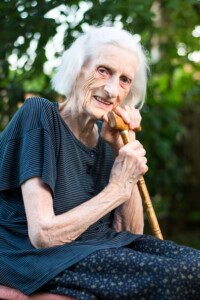
Shutterstock/Creative Family
– Women who don’t strength train will lose significant muscle mass by the time they’re 75 … to the tune of five pounds per year beginning at 30.
– Lack of strength training expedites loss of bone mass and leads to brittle bones.
– Not eating enough (which in some cases can be caused by medical problems and depression) lowers the fat volume.
– If caloric intake is low enough, the body will feed off its muscle, further reducing muscle mass.
Put that all together and you get an alarmingly thin and frail elderly woman.
A More Medical Explanation
When older people eat, their body cannot make muscle as quickly as in a young body, say researchers from the University of Nottingham.
The body should be making muscle from the protein in food, and in people over 65, this process is suppressed.
Have you ever seen a very thin elderly woman (or man) training with weights at your gym?
I don’t mean a newcomer with a personal trainer who’s for the first time learning what to do with a two pound dumbbell.
I’m talking long-time workout enthusiasts — the long-timers or veteran gym-goers who are in the elderly age range and have pretty decent looking physiques.
Some may be plump, but you can see more muscle mass than what’s present in their same-age, non-weightlifting peers.
In younger adults, the hormone insulin helps slow down muscle breakdown overnight.
In older people, this protective mechanism doesn’t happen. A poorer blood supply may be responsible.
For an experiment, “We tagged one of the amino acids (from which proteins are made) so we could discover how much protein in leg muscle was being broken down,” explains Michael Rennie, professor of clinical physiology at Nottingham, in a report in The American Journal of Clinical Nutrition.
“The younger people’s muscles were able to use insulin we gave to stop the muscle breakdown, which had increased during the night,” says Rennie in the paper. “The muscles in the older people could not.”
Blood flow in the leg was greater in the younger subjects as well. Rennie speculates that the rate of nutrient and hormone supply is lower in elderly people. “This could explain the wasting we see.”
Solution #1 to Underweight in Elderly Women (and Men)
Beth Phillips, a PhD student working with Rennie, showed in separate research that strength training can help resolve the problem.
Three weightlifting sessions a week over 20 weeks restored blood flow responses, making them very similar to those in the younger adults.
Solution #2 to Underweight in Elderly Women (and Men)
“The fix is more protein, but not animal protein,” says Dr. Doyle.
“Consuming high protein plants such as beans, soy, legumes, broccoli, peas, whole grains, quinoa, avocado, will not only help build muscle, but the phytonutrients in these foods will also slow the aging process inside and out.
“In addition to diet, weight-bearing exercises and resistance training also help maintain muscle mass.”
Simple Observational Evidence
You really don’t need science to explain the obvious. Look at the 50-something people at your gym who train seriously with weights.
Now imagine what their physiques will look like 20 years from now. If such individuals continue strength training over the next 20 years, I just cannot—for the life of me—imagine that by then, they will look thin and sickly.
I cannot see the extrapolation or deduction when looking at them presently. I’m not talking about the middle-agers who don’t train all that hard.
I’m talking about the very serious ones who look quite impressive for their age.
They are not going to end up in the same boat as their same-age counterparts—who don’t strength train—20 years from now. It’s just not logical.
Younger women who are “skinny fat” and who will never take up serious strength training are looking at their golden years sporting an alarmingly thin, sickly body.
 FoodTherapyMD™ is the brainchild of Dr. Mitchell Doyle and recognizes that phytonutrients, the substances that make plant food so amazing, can be tailored to fight specific disease states.
FoodTherapyMD™ is the brainchild of Dr. Mitchell Doyle and recognizes that phytonutrients, the substances that make plant food so amazing, can be tailored to fight specific disease states.
 Lorra Garrick has been covering medical, fitness and cybersecurity topics for many years, having written thousands of articles for print magazines and websites, including as a ghostwriter. She’s also a former ACE-certified personal trainer.
Lorra Garrick has been covering medical, fitness and cybersecurity topics for many years, having written thousands of articles for print magazines and websites, including as a ghostwriter. She’s also a former ACE-certified personal trainer.




